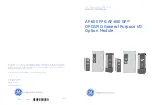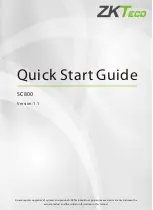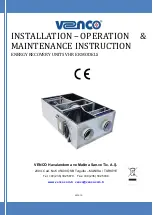
4.1 | PRELIMINARY UNPACKING INSTRUCTIONS AND DEALER INSPECTION
Maintenance locks must be engaged prior to inspecting or servicing the unit when the platform is elevated.
Inspect machine for any possible damage during shipment; perform a pre-delivery inspection. See checklist in the
Maintenance Manual. Reset emergency stop switches, if necessary.
4.2 | STORAGE
After periods of storage, exposure to extremes of ambient conditions-heat, cold, moisture, dust etc., inspect the
machine. Refer to the Pre-Delivery/ Frequent Inspection Checklist in the Maintenance Manual.
4.3 | TRANSPORTATION
Lower the work platform to the down position and check entire
machine for loose or unsecured items. Remove any loose items
from machine.
The machine can be pushed by lifting the brake levers behind each
rear wheel. To resume normal operation, make sure both brake
levers are down. Do not push at speeds more than 2 mph (0.9 m/s).
Do not attempt to push or tow unit with the brakes applied. Severe
gear damage will occur. Towing is not recommended.
4.4 | LIFTING AND TIE-DOWN POINTS
Lower the work platform to the down position. Turn key switch to off position. For safety and controlled handling,
it is not recommended to move the unit on a slope greater than 5°. Check entire machine for loose or unsecured
items. Remove any loose items from machine. Apply manual brake lock on rear wheels.
FIGURE 6: Tie-Down Points
Tie-down points are provided in the front and rear of the machine for
securing the machine on a trailer or truck bed for transport between places
of use. They may also be used as lift points.
SECTION 4 | TRANSPORT, HANDLING & STORAGE
FIGURE 7: Rear Brakes
BY CUSTOM EQUIPMENT LLC
20
OPERATIONS & SAFETY
HB-P3.6
SUPO-725
REV C









































